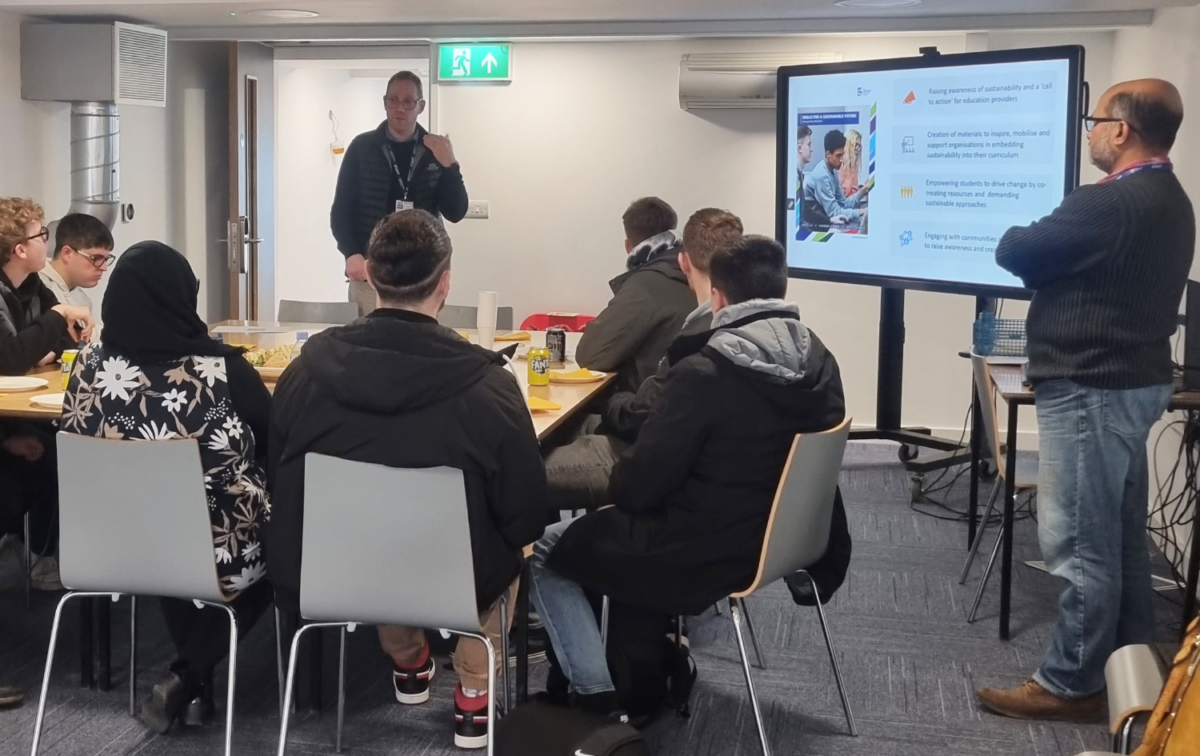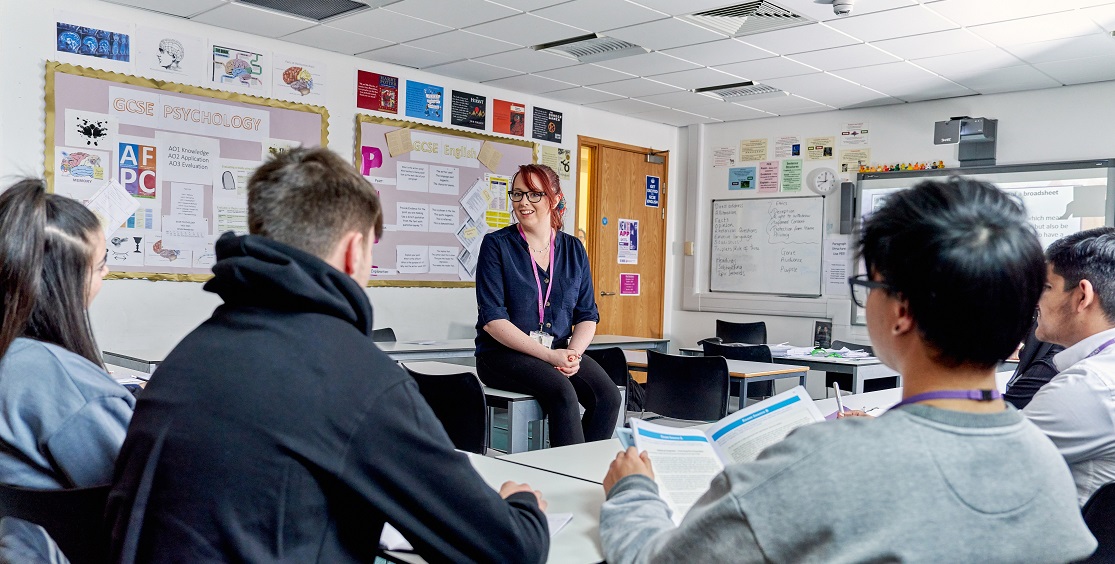The Post-Covid Future of Work: Implications for FE

“No man can have in his mind a conception of the future, for the future is not yet. But, of our conceptions of the past, we make a future” – ‘Human Nature’ Thomas Hobbes (1650)
There are major challenges ahead for college governors, senior leaders and awarding bodies (not to mention policy makers!) in the post-COVID world of work. The verdict of the voluminous literature on the subject is virtually unanimous: the pandemic has accelerated and magnified already-existing trends in ways which will transform our working lives. The ‘new normal’ is here. The old certainties have dissolved: the commute; the familiar office and its comforting surroundings; the fixed working day; the informal interactions with colleagues; the clear demarcation between work and life. All are being consigned to the dustbin of history. One commentator has described the pandemic as an “earthquake that triggered a tsunami, one that has washed away the old ways of working”.
- Working from home (WFH)
The most widely-discussed change has been the transition to working from home. While this imperative has been officially lifted in the UK, the evidence points to the continuation and integration of this practice in everyday life. A CBI survey found that 93 per cent of businesses expect their employees to work from home some of the time, while Nat West expects only 13 per cent of its 64,000 staff to work exclusively in an office. Furthermore, a Deloitte survey of 20,000 workers concludes that the vast majority anticipate being able to decide “when, where and how they work”.
Such findings stem from that the fact that the fears of employers concerning WFH have proved to be unfounded and potential business advantages have become apparent. Most significant is that the removal of employees from direct supervision did not lead to a fall in productivity. Indeed, a survey of 500 businesses and 5,000 workers across nine sectors and 10 countries found that 63 per cent of respondents reported higher productivity.
Such a move has also generated changes in ways of working. One survey has found that the number of meetings held has increased (+12.9%) but so has the number of attendees (+13.5%) while their average length has fallen (-11.5%). Microsoft Japan has incorporated these lessons into its on-site working, replacing early morning meetings with a remote chatroom and restricting meetings to 30 minutes and five attendees. This has been combined with a reduction in the working week from five days to four, a move being considered nationally in Spain and Scotland. This shift appears to have a momentum of its own. A workplace sensors company, Freespace, reports that, in the week 7th-11th March 2022 in London, office occupancy was 25 per cent on Monday, 40 per cent on Tuesday, 36 per cent on Wednesday before peaking at 42 per cent on Thursday and falling dramatically to just 13 per cent on Friday. “Life will decide”, as Lenin used to say, but those of us involved in education and skills may have to anticipate.
The transition to WFH is not without its challenges. No fewer than 70 per cent of companies participating in a CBI Economics Survey in 2021 felt that it had had a negative impact on ‘brainstorming’ and 83 per cent that it had precluded informal collaboration and ‘water cooler’ conversations. Creativity could be the potential price to pay for flexibility and choice (and reduced costs); a danger which is being recognised in thinking about the future of the physical workplace.
- Shrinking the office, redefining purpose
The financial benefits of WFH for employers were quick to be spotted. The need for existing office space was immediately placed in question, opening up the possibility of significant savings on running costs (heat, lighting, repairs, security and so on) as well as of realising the value of building assets. According to a survey of 404 companies, three quarters of medium-sized businesses in the UK are planning to cut back on office space. The headline in The Financial Times is succinct: “UK businesses think big about smaller office spaces”
At the same time, if the premises that employers retain will be smaller, they will not disappear. While a CBI survey of 2021 reports that 93 per cent of employees will be working from home at some point, only 5 per cent will be doing so all of the time. It appears that space will be reconsidered in ways to meet the shortcomings identified in WFH. This will include places to allow and nurture collaboration and creativity: conference rooms; training facilities; conference spaces; and large video displays. ”Redesigning the physical and digital environment with its focus on collaboration and the role of the physical workplace as a destination for innovation, networking, and culture-building” will be the order of the day, according to the authors of a Deloitte article entitled ‘From survive to thrive’.
The implications for further education are profound.
Preparation for the world of work will have to look different, at least in part. Notwithstanding the technical and physical aspects of WFH, there are the social and emotional demands of meeting and communicating remotely. More broadly, there is a readiness required for the self-motivation and self-discipline of WFH together with the mental and emotional strains of potential isolation and atomisation. At the same time, the qualities and values of collaboration and creativity have to be nurtured and developed.
Such requirements pose significant questions about the content and delivery of qualifications; the nature of work experience; the role of the tutor and teacher; and the nature of the college environment so that it can simulate and encourage the twin pressures of working alone at home and working collaboratively, collectively and creatively in a shared space.
- Automation, artificial intelligence and digital dexterity
The use of WFH, its future growth and its integration into the world of work are enabled and encouraged by new technologies. Cloud computing means that employees are technically able to work anywhere and at any time. Automation and artificial intelligence (AI) have the capacity to reduce or replace mundane tasks (and have the potential to do so much more). Investment was underway before the pandemic but its impact has been to speed this up. The World Economic Forum reports that 94 per cent of UK companies surveyed are planning to accelerate ‘digitalisation’ and 57 per cent to speed up the introduction of automation.
This will have a major impact on the future of work and the development of work-related qualifications and provision. It is anticipated that automation will reduce the number of lower-paid jobs and occupations, requiring training for those workers displaced and seeking work in new sectors. Globally, this involves 1 in 16 workers or 180 million people by 2030-12 per cent more than prior to the pandemic. It will also mean that the nature of work will change, requiring new cognitive skills and emotional attributes as the repetitive performance of tasks becomes automated.
Clearly, the impact of automation and its resultant training needs will vary regionally so nationally-imposed qualifications will lack the necessary flexibility and sensitivity to meet local needs appropriately and effectively. Colleges will therefore be crucial members of the local and regional coalitions necessary to identify and develop the requisite qualifications and training.
- Rediscovering humans, not resources
The pandemic apparently reminded us that human relationships are central to a good life, a point not lost on the ancient Greek philosophers This is (worryingly) sometimes represented as a revelation. A 2021 CBI Economics Survey concludes that COVID 19 has persuaded employers that it is now time to humanise labour, placing employees at the heart of work. This conclusion is well summed up by the title of an article by Yvette Cooper,’ The future of work might put people first’.
What this seems to mean is that WFH has highlighted that attention to the well-being and preferences of staff are critical to business success. The mental health of workers has become a major concern as the uprooting of personal and work relationships, together with the threat and experience of loss, have led to feelings of isolation. COVID has highlighted the role of employers “as a social safety net”.
The pandemic has also forced a recognition of the need for higher investment in learning and development. A joint CBI-Birkbeck College project reports that 50 per cent of UK businesses surveyed intend to raise investment in training in the next five years. This is a direct response to the new pressures generated by the pandemic. There is the obvious need to develop the digital skills required are a result of the innovations described above. In addition, these, together with WFH, require new approaches to leadership and management. In the absence of direct supervision, skills of adaptability, empathy, active listening and virtual team-building will have to be developed. The implications for qualifications, the nature of work experience and the learning and development of leaders and managers are stark.
Perhaps the biggest challenge is the predicted shift in the content of work. In particular, the CBI/Birkbeck survey noted that employers recognised that emotional and social skills and qualities are likely to become more important, but respondents were far less confident that this need would be met. A Passport to Success study agrees and estimates that, by 2030, employees will be spending 24 per cent more time on emotional and social activities rather than routine tasks. How will future qualifications develop and capture (rather than crush) such emotional, cognitive and social qualities and attributes (please don’t mention the Diploma!)?
Finally, surveys concur that there will be major training and development needs generated by the technical development of work whether a worker stays in the same economic sector or decides to change sector. A Learning & Work Institute study concludes that “one in three adults say they want to switch job, but most think they lack the skills to do so”. One-third recognised that training would help this transition but a worrying 15 per cent said that they had no idea about where or how to go about such training.
In this context, it is no surprise to learn that UK employers ask for qualifications which are both flexible and sensitive to the changes wrought by COVID. For example, they are asking that the new T levels be delivered, at least partially, online; that they should be delivered in a hybrid form where students wish to enter a sector combining remote and office work; and that the latter balance should be determined by the employer.
- Conclusions and reservations
There are dangers in futurology in relation to the world of work as in anything else. It would be foolhardy to deny the pace of change in automation, for example, but it would be equally risky to assume that, even strong, trends will continue unabated or unobstructed. Those of us of a certain age will remember the confident predictions of educational commentators (and some principals) in the early 1990s that IT was going to call time on the classroom and college institutions as physical entities (not to mention the contemporaneous “demographic time bomb”, prompting plans for contractions and reorganisations, that never exploded).
Moreover, extrapolations from the immediate impact of COVID 19 in the near future underplay contingency and agency. There is discussion of how the pandemic has forced a rethink about our priorities-people before profit, public service over private gain. CIPD concludes “If coronavirus is forcing a rethink of how we work, it should also force us as a society, to rethink what kinds of work we value as a society”. This is social analysis with the politics left out. Such a rethink would be (literally) revolutionary. In the UK the pandemic occurred under a Conservative Government. It required emergency measures, entailing huge public expenditure by the state, but the Government remained and remains committed to free markets, the primacy of the private sector and low taxes. Apart from the rhetoric, realistically, what will be the change?
Much of this article has concentrated on WFH and its future impact. This is, no doubt, an important shift but its treatment is ideology in its purest from. The concerns of a particular social group are analysed and presented as the concerns of all. Yet, a third of the UK workforce are classified as ‘key workers’ exempt from, and simply unable to exercise, WFH. Fewer than 4 per cent of the workforce stayed at home to work at the height of the pandemic in Burnley and Middlesborough compared to 46.4 per cent in London. Such statistics emphasise the need for regionally developed, rather than nationally-imposed, responses arising from collaborations, coalitions and consultations involving awarding bodies, trade unions, employers, local authorities and colleges.
However, such disparities don’t arise from geography: they are rooted in social class. If we ignore, or try to gloss over, this stubborn and durable fact, then our analyses of the post-COVID world of work will be partial, one-sided and, in its purest form, ideological.
Ken Warman was a teacher, manager and Principal in further education for over 30 years. He is now a freelance researcher and writer on politics and education. He is currently writing a book, ‘Dinner With Caligula’, about the intervention of the Further Education Commissioner and other state agencies in the post-16 sector











Great article.